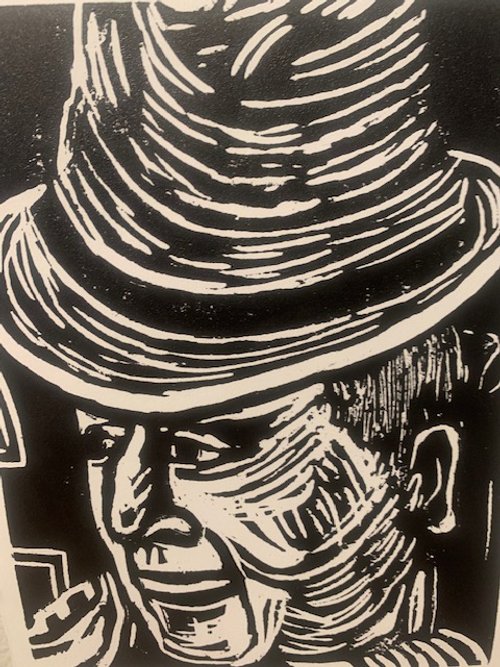By Seeing Others, We Know Ourselves
As an artist, I have always been interested in the human face. Whether I was working in oils, acrylics, pastels, or pencil drawings, I was fascinated by searching for hidden emotions. It was when I saw an exhibition of large-scale woodcut prints that captured the pain and suffering of others that I knew I wanted to learn all I could about this form of relief printmaking. And I am still learning. There is a mystery about this process in that the end print has gone through a series of transformations, which is quite different from the original sketch. I have found the wood cut speaks the language that helps express myself in a very meaningful way.
My Process of Creating a Woodcut Print
STEP 1
I start with a sketch I made from either a photo I took or an observation that piqued my interest. I then draw the image with black ink onto the woodblock using brushes, pens, or markers to establish a variety of lines that I will follow — a map of sorts.
STEP 2
Next, I begin slowly cutting away the areas that I want to be the color of the paper I will be printing on, usually an off-white. The areas of wood that remain will be the color of the ink, usually black. As I continue to cut, I try to see the composition as a unified whole, looking constantly to eliminate what does not seem necessary and refining what needs clarification.
STEP 3
Now I ink the woodblock using a rubber roller called a brayer that has been coated with black ink.
STEP 4
In this final phase, I lay my paper face down onto the inked block and begin to hand rub with some tools to transfer the ink onto paper. I call this Proof 1. Once done, I look at the print and evaluate what has to be corrected by cutting more away on the woodblock. These proofs continue until I am completely satisfied. At that point, I begin making ten editions of each to complete the process.
Finished woodcut print.




